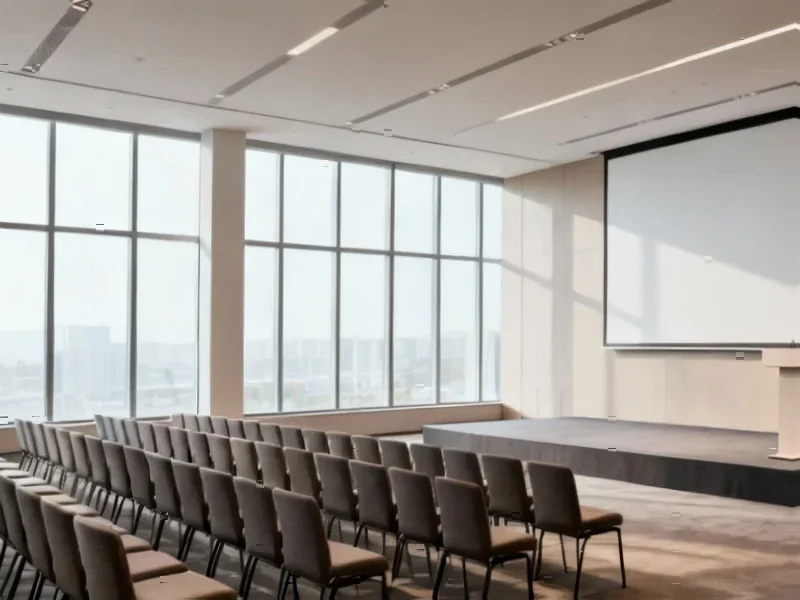According to Fast Company, Home Depot has partnered with AI startup Kai to create a visual identification system that can analyze photos and videos of house projects and convert them into specific material requirements and cost estimates. The system, described as an “AI-native renovation intelligence platform” by Kai CEO Or Agassi, can identify everything from cracked doors needing replacement to outdated furnaces that should be upgraded. Through a guided photography process, Kai analyzes images to determine required materials and links directly with Home Depot’s inventory of 3.5 million items, allowing renovators to immediately order identified products. This partnership represents a significant advancement in automating the traditionally labor-intensive process of creating renovation plans and material lists for house flippers and professional renovators.
Table of Contents
The Computer Vision Revolution in Home Improvement
What makes Kai’s technology particularly impressive is its ability to handle the messy, unpredictable nature of renovation sites. Unlike controlled environments where computer vision systems typically excel, renovation projects involve variable lighting, incomplete spaces, and overlapping elements that challenge even human experts. The system likely employs sophisticated object recognition combined with spatial understanding to differentiate between existing structures that should remain versus elements requiring replacement. This goes far beyond simple image matching – it requires contextual understanding of what constitutes “damaged” versus “functional” in building components.
Transforming the Professional Renovation Business
For institutional home renovators and professional house flippers, this technology addresses one of their biggest pain points: accurate and rapid material quantification. The traditional process involves manual measurements, multiple supplier visits, and constant revisions to material lists as projects evolve. By automating this process, Kai could reduce planning time from days to hours while potentially improving accuracy. The direct integration with Home Depot’s massive inventory creates a seamless workflow from assessment to procurement, something that could significantly compress project timelines for volume operators.
Where This Fits in the Broader AI Race
Home Depot’s move represents a strategic play to capture the professional renovation market through technology rather than just price competition. While competitors like Lowe’s have experimented with AR tools for consumers, this partnership targets the high-volume professional segment where loyalty is driven by efficiency and reliability. The timing is particularly interesting given the current retail landscape where traditional retailers are desperately seeking AI differentiation. By embedding themselves directly into the renovation workflow, Home Depot creates a sticky ecosystem that could lock in professional customers beyond individual project cycles.
The Reality Check: Limitations and Risks
Despite the impressive technology, several challenges remain unaddressed. The system’s accuracy in complex renovation scenarios – such as identifying structural issues behind walls or assessing electrical and plumbing systems – remains untested for most real-world applications. There’s also the question of liability when AI-generated material lists prove incomplete or incorrect, potentially leaving contractors with costly project delays. The technology’s reliance on specific building materials available through Home Depot could also limit flexibility for contractors who prefer specialty suppliers or specific brands not carried in the retailer’s inventory.
Where This Technology is Headed
Looking forward, the natural evolution of platforms like Kai will likely involve integration with project management software, permitting processes, and even contractor scheduling systems. The real prize isn’t just material identification but creating a fully automated renovation pipeline from assessment through completion. As the technology matures, we can expect to see similar systems expanding into commercial construction and insurance restoration work, where rapid and accurate damage assessment is equally valuable. The success of this partnership will depend heavily on how well the system handles edge cases and whether it can deliver consistent results across the incredible variety of conditions found in renovation projects.
Related Articles You May Find Interesting
- Why NetBird’s Self-Hosting Edge Could Reshape the VPN Market
- Nordea’s Bitcoin U-Turn Signals Banking’s Crypto Capitulation
- AI Audit Slashes $162K From Hospital Bill in Medical Billing Breakthrough
- Microsoft’s Windows Update Overhaul: Simplicity Meets Strategy
- Animal Crossing’s Switch 2 Upgrade Signals Nintendo’s Next-Gen Strategy



